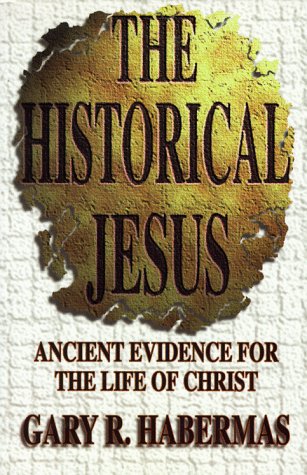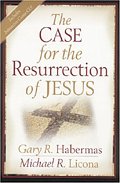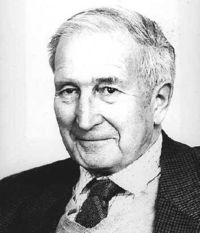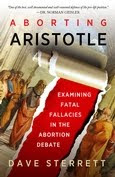 by Brian Auten
by Brian AutenChristians consider the Bible to be the Word of God.
1 It is revered as the final authority in life and doctrine. Yet what makes this book so special? How can it be considered the authoritative Word of God? How can it be believed to be inerrant? This paper will briefly explore the nature of the Bible, its historical reliability, and its claims of inspiration. The purpose of this paper is not to prove the inerrancy of the Bible, but to show that accepting the Bible as the inerrant and authoritative Word of God is logical and warranted based on the person of Jesus Christ.
The Nature of the BibleThe world’s best-selling book is also the most translated, most published, most quoted, and most influential book in history.
2 The word Bible simply means “book.” It is a collection of sixty-six books, written by about forty authors over the course of approximately 1,500 years. Composed of two sections, the Old and New Testaments, it contains a variety of literary genres: law, history, poetry, prophecy, biography, letters, and apocalyptic writings. Despite the diversity of its writings, the overarching theme of the Bible is one central figure in history: Jesus Christ.
It must be understood that the Bible is wholly unique among texts that are considered sacred. The Bible displays a unity and harmony throughout that is distinct. It contains hundreds of specific prophecies that have been fulfilled with complete accuracy—something no other religious book can boast. It is historically verified and supported by archeology. No scientific inaccuracy has ever been found. From a literary perspective, the Bible’s richness, depth, and beauty are unequaled.
The Historical Reliability of the New TestamentBefore the claims of the New Testament are examined, an important question must be asked: Can the New Testament be trusted as history? When you question a document’s historicity, you question the document’s authenticity, and ultimately, its authority.
There is much more evidence for the New Testament than for any other ancient writings of comparable date.
3 There are over 5,000 Greek manuscripts of the New Testament, all of which bear earlier dates than any other ancient works. F. F. Bruce, considered to be one of the greatest of New Testament scholars, said: “The evidence for our New Testament writings is ever so much greater than the evidence for many writings of classical authors, the authenticity of which no one dreams of questioning.”
4According to New Testament scholar Craig Blomberg, “…97-99% of the New Testament can be reconstructed beyond any reasonable doubt, and no Christian doctrine is founded solely or even primarily on textually disputed passages.”
5 There are no variant readings among textual critics that affect issues of doctrine or historical fact. For all intents and purposes, the NT as we have it today is the same message and content as the original manuscripts. The highly respected scholar Sir Frederic Kenyon sums it up:
"The interval then between the dates of the original composition and the earliest extant evidence becomes so small as to be in fact negligible, and the last foundation for any doubt that the Scriptures have come down to us substantially as they were written has now been removed. Both the authenticity and the general integrity of the books of the New Testament may be regarded as finally established."
6Before even evaluating the spiritual claims of the New Testament, one can confidently view it as authentic, reliable, and historically accurate. This is supported by abundant manuscripts, archaeological evidence, and external historical sources. One need not believe in the inspiration or inerrancy of the scriptures to trust the New Testament as a reliable historical record.
The Life of Jesus ChristFrom the New Testament documents, one is introduced to the person of Jesus Christ. His authoritative teaching and radical claims of divinity culminated in his crucifixion, death, burial and resurrection from the dead. Christ’s closest followers were eyewitnesses to the events, and their lives were transformed. Many who were unbelievers and skeptics were converted. James, the unbelieving brother of Jesus, was converted and died for his belief in the resurrection. In the same way, Saul, the persecutor of early Christians, was radically converted because he believed in the resurrected Jesus.
7 The rise of the early Church in Jerusalem was considerable, as those nearest to these events believed and gave their lives by the thousands.
It is through the New Testament account of Jesus Christ, and the reality of his resurrection, that one comes to faith in the Son of God for salvation. This faith in Christ transforms the life of the believer, and enables him to receive the Bible itself as the Word of God. The point to be made here is that faith in Christ is the prerequisite for the acceptance of the Bible as the Word of God. This belief is not unwarranted or baseless.
Rather, it is warranted by one’s acceptance of Jesus Christ and based in the authority of Jesus’ teaching. The New Testament simply provides a fully trustworthy historical account for one to be introduced to Jesus Christ. Then, through Jesus Christ, the Christian can know8 that the Bible is God’s Word, as the Holy Spirit enables him.
This argument may not seem valid for the skeptic. The skeptic may balk at the idea of any “leap of faith,” or “suspension of reason.” However, it has been demonstrated that this in not an irrational jump of logic. The early Church was composed of those who had legitimate reasons to believe that Jesus Christ rose from the dead and is who he claimed to be. The same reasons they had, we have today through the historical account of the New Testament. Once one sees that Jesus truly is the Son of God, everything changes.
Jesus’ View of ScriptureJesus’ view of scripture is central to the Christian view of the Bible. His resurrection confirms His claim as the Son of God, and thus His ultimate authority is established. Therefore, Jesus Christ is the cornerstone for the doctrine of Biblical inerrancy.
First, Jesus considered the scriptures (what we refer to now as the Old Testament) to be historical fact. Throughout the Gospels His view does not change. Jesus refers to Abel, Noah, Abraham, Sodom and Gomorrah, Lot, Isaac and Jacob, manna, the snake in the desert, David, Solomon, Elijah, Elisha, Jonah, Zechariah, and Moses.9 In each of these accounts, Jesus takes the scripture as literal historical fact. Christ also affirms the account of creation in Genesis chapters one and two. Regarding the historical references of Jesus, John W. Wenham said, “the narratives that are least acceptable to the ‘modern mind’ are the very ones that He seemed most fond of choosing for illustrations.”
10Second, Jesus considered every word of scripture to be divine. Contrary to the liberal view of many scholars today, Jesus’ opinion of the scriptures was that they were fully inspired by God—even to the smallest letter: “I tell you the truth, until heaven and earth disappear, not the smallest letter, not the least stroke of a pen, will by any means disappear from the Law until everything is accomplished” (Matthew 5:18). Indeed, Christ considered the scriptures fully inspired even in the smallest details.
Third, Jesus considered the scripture authoritative. In John 10:35, Jesus said, “…the scripture cannot be broken…” When tempted by the devil, Jesus appealed to the authority of scripture three times (Matthew 4:4). Also, Jesus lived in full expectation that the prophecies made about him in the Old Testament would be fulfilled. John W. Wenham lists over twenty times that Jesus refers to himself as the fulfillment of Old Testament prophecy.
11
In one particularly notable passage, Jesus speaks to his disciples about his own fulfillment of prophecy: He said to them, “How foolish you are, and how slow of heart to believe all that the prophets have spoken! Did not the Christ have to suffer these things and then enter his glory?” And beginning with Moses and all the Prophets, he explained to them what was said in all the Scriptures concerning himself (Luke 24:25-27). If Jesus considered the scriptures to be the Word of God, should Christians consider them to be anything less?
The Apostles’ View of ScriptureAs Christ’s contemporaries and authoritative heralds of His Gospel, the apostles’ view is important to the study. Like Jesus, they considered the scripture to be the very word of God. Among the New Testament writings, at least ten percent is Old Testament material, composed of some 295 quotations, 1600 citations, and numerous allusions.
12Jesus promised the Holy Spirit, who would lead and guide the apostles into all truth (John 14:26, 15:26, 16:13-15). Therefore, they wrote with the understanding that they had a commission from Christ to fulfill. As professor of theology Edwin A. Blum put it, “As the apostles were commissioned to preach the message of Jesus’ death and resurrection, they were also instructed and enabled by the Holy Spirit to teach these truths to the church.”
13Accordingly, the apostles saw their own writings as inspired scripture. For instance, Peter referred to Paul’s writing as scripture: “. . . His letters contain some things that are hard to understand, which ignorant and unstable people distort, as they do the other Scriptures, to their own destruction” (2 Peter 3:16). We have the inspired writings of the apostles today in the letters of the New Testament.
The Biblical Teaching of InspirationThe Bible itself makes the claim to be the inspired Word of God. When looking at the concept of inspiration, we must define it in the terms the Bible gives. 2 Timothy 3:16-17 says, “All Scripture is God-breathed and is useful for teaching, rebuking, correcting and training in righteousness, so that the man of God may be thoroughly equipped for every good work. (NIV)” Other translations of 2 Timothy 3:16, such as the New American Standard Bible, may read, “All Scripture is inspired by God” (emphasis added).
The meaning of the word inspired is literally “God-breathed.” As Bible teacher John MacArthur put it, the word inspired could be more accurately called “expired,” because the scriptures were breathed out by God. The Bible claims to be a divinely authoritative book resulting from a process whereby Spirit-moved men wrote God-breathed words.
14While inspiration is defined as “God-breathed,” it can be described as both verbal and plenary. Verbal means that the words of scripture themselves are inspired, not the writers. Plenary means complete in all respects; the entirety of scripture. So our definition of scripture is that every word of the Bible is God-breathed.
Inspiration does not imply a word-for-word dictation from God. Throughout the scripture, one will find a diversity of authors and their particular writing styles. One will also find figures of speech, various levels of grammar, references to non-biblical documents, and many different literary genres. This does not call into question the inspiration of the Bible. The teaching of inspiration simply states that God spoke His words using human authors and human language.
The Doctrine of InerrancyInerrancy has to do with truth. It means the Bible is truthful and does not err. Theologian Paul D. Feinberg proposes the following definition of inerrancy:
Inerrancy means that when all facts are known, the Scriptures in their original autographs and properly interpreted will be shown to be wholly true in everything that they affirm, whether that has to do with doctrine or morality or with the social, physical, or life sciences.
15This definition helps to clarify what is and is not implied in the doctrine of inerrancy. Inerrancy applies to the original writings (autographs), not the copies. The Bible teaches that the scriptures were inspired, not the scribes or copyists. Thus, inasmuch as the copies reflect the originals, they are considered inerrant. Any errors in copying, transmission, or preservation do not negate original inerrancy. No human interpretation is infallible, so proper hermeneutics is necessary.
Inerrancy denotes that the Bible is true in all it affirms. For instance, the Bible contains historical record of many evil acts, but it does not condone or teach those evil acts. Finally, inerrancy is not a denial that difficult passages exist within the Bible. But these difficult passages should not be assumed to be errors, contradictions, or discrepancies simply because they have not yet been understood or harmonized. One should be encouraged by the fact that for over 2000 years the Bible has stood the test of time.
Biblical inspiration implies inerrancy because of the nature of who God is. Bible teacher R. W. Glenn presents the following syllogism to describe the derivative nature of inerrancy: 1) God is always truthful in all that He does; 2) God is the author and source of scripture; 3) Therefore, scripture is always truthful.
16 It follows logically that if the scripture is inspired by God in all its parts, it is inerrant and therefore authoritative.
Inerrancy, therefore, is not derived from an observation or a survey of the text itself. Inerrancy is not a proven fact; nor can it be proven. Inerrancy is a doctrine derived from the teaching of inspiration, grounded in the person and authority of Jesus Christ. Therefore, Christians believe and accept the Bible to be inerrant ultimately based upon Jesus Christ.
ConclusionIn conclusion, we see that the Christian has good reason to believe the Bible to be the inerrant and authoritative Word of God in all matters. The historically reliable account of Christ’s resurrection testifies to his divine identity; Jesus’ authority as the Son of God authenticates the scripture’s claims; and the inspiration of the Bible establishes its inerrancy and ultimate authority for the believer.
1 The words Bible, scripture, and Word of God will be used synonymously throughout this paper.
2 Norman Geisler and William E. Nix, From God to Us (Chicago, IL: Moody Press, 1974), p. 7. 1
3 F. F. Bruce, The New Testament Documents: Are They Reliable? (Downers Grove, IL: Inter-Varsity Fellowship, 1981), p. 10.
4 Ibid.
5 Craig Blomberg and William Lane Craig, Reasonable Faith (Wheaton, IL: Crossway Books, 1994), p. 194.
6 Bruce, p. 15.
7 The conversions of James and Paul are accepted as undisputed historical fact by virtually all scholars due to the substantial historical evidence. See Gary Habermas and Michael Licona, The Case for the Resurrection of Jesus (Grand Rapids, MI: Kregel Publications, 2004), pp. 64-69.
8 Knowledge can be defined as, “True belief that is warranted or justified.” See C. Stephen Evans, Pocket Dictionary of Apologetics and Philosophy of Religion (Downers Grove, IL: Intervarsity Press), p. 66.
9 John W. Wenham, Inerrancy (Grand Rapids, MI: Zondervan Publishing House, 1980), p. 6.
10 Ibid., p. 7.
11 Ibid., pp. 19-29.
12 Edwin A. Blum, Inerrancy, p. 41.
13 Ibid., p. 40.
14 Geisler and Nix, p. 21.
15 Paul D. Feinberg, Inerrancy, p. 294.
16 R. W. Glenn, “Bibliology, Part 4: Inerrancy” (Redeemer Bible Church, Minnetonka, MN)
 The Historical Jesus by Gary Habermas is a thorough and solid presentation of the historical evidences of the life of Jesus. Countering much of the skeptical authorship and questionable scholarship that can be seen in today’s treatment of the Jesus of history, Habermas takes a simple and straightforward approach to the subject. He presents a clear picture of Jesus and shows the reader the evidence from a wide array of historical sources.
The Historical Jesus by Gary Habermas is a thorough and solid presentation of the historical evidences of the life of Jesus. Countering much of the skeptical authorship and questionable scholarship that can be seen in today’s treatment of the Jesus of history, Habermas takes a simple and straightforward approach to the subject. He presents a clear picture of Jesus and shows the reader the evidence from a wide array of historical sources.












